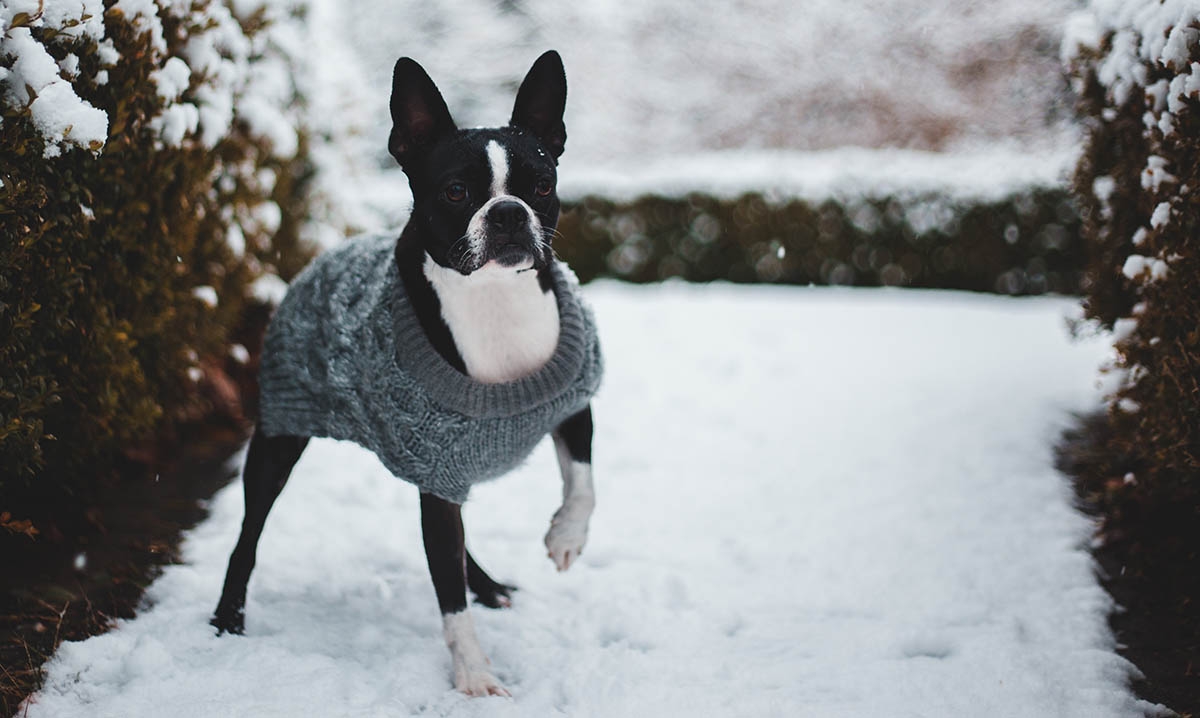
Essential dog winter safety tips
Winter is already here. This means not just you but your pet needs special attention to remain healthy during cold conditions. Here are a few tips that will help you keep your dog safe in winter.
1. Know Your Dog’s Limits:
Some dogs are more sensitive to cold weather than others. Puppies or elderly dogs are also more susceptible to cold than others. If you know how much cold your dog can withstand, you can take precautionary measures accordingly. Your dog will need special attention, especially if you have a short-coated dog such as mine (a labrador retriever). If you are interested in Labrador puppies in Ontario, visit on the link.
2. Keep Them Inside:
This is a no-brainer. Do not let your pet go outside much, especially when not looking. The snow may be loose, and your pet may get injured. Keep an eye on your fur baby before you let her outside. I prefer to keep my pet inside during winters most of the day. If she insists on going out because she gets bored, I improvise certain indoor games to keep her busy. If your dog lives outside, build a shelter for them during winter to not freeze outside. Raise the floor a few inches above the ground and face the opening against the direction of the wind. Still, I would strongly suggest you bring them inside for additional safety.
3. Avoid Frequent Baths:
In winter, due to dry and cold weather, your pup’s skin needs more oil than in other seasons. If you give them a frequent bath, their skin will become dryer and flaky due to a lack of essential oils. You should limit bathing your dog, and if you need to clean it, you can use dry shampoo instead. Oil your dog before their bath as it will help keep the skin nourished. Remember to let the oil sit for a few hours before bathing the dog.
4. Get Them to Wear Winter Clothes:
Just like humans, when it gets too cold outside, using additional clothing layers will keep your dog warm. The dog fashion industry has expanded in the last few years, and you will find all types of winter wears available. Use bomber jackets when you take your dog outside. If it is too cold, make your dog wear a sweater at home. For mild winters, there are sweatshirts also available.
5. Get Shoes for Your Dog:
Dogs can get frostbites, too, if they are bare-footed outside. Especially if your dog breed is not a snow breed. This is why you should get shoes for your dog. It is tough to get them to wear shoes for sure. My dog made a lot of fuss and tried all possible ways to just take them off. Start by making them wear two shoes on the front foot and use treats to encourage them to wear them. Once they get used to it, make them wear all four shoes. You should make them practice by walking inside the house in shoes before taking them outside.
6. Wipe Their Paws:
If your dog plays barefoot in the snow, your dog’s paws can pick all kinds of toxic chemicals, such as salt and antifreeze. Ensure to wipe off your dog’s paws as your dog comes back home to prevent it from licking off these chemicals, which can make your dog sick. While you wipe your dog’s feet, check for any signs of injury, such as cracked or bleeding paws.
7. Warm Their Water:
Ensure your dog drinks a lot of water during winter. Most importantly, warm up their water so that they do not consume chilled water. This can give them cold just like us, especially during extreme weather conditions.
8. Make Them Sleep on Their Warm Bed Only:
If you find your dog hanging out on the couch more than usual, it means the floor feels cold. Dogs have the habit of sleeping on the floor most days, but as the temperature dips, the floor becomes cold during winters. It is preferable to teach them to sleep in their bed only. Put a warm blanket on the bed to make it cozy for them so that they do not climb on your furniture much.
9. Keep Car Windows Closed:
When you travel with your pet, if you have the habit of keeping a small window open for your pet to hang its head out and sniff around, avoid that during winter. As the car catches speed, the wind that blows seems colder, and your dog may catch a cold.
10. Take Them to Walks Only When There is Light Outside:
You need to walk your pet twice a day for sure. Do not go out late at night or early morning when the temperature dips at the lowest. Instead, go for a walk when there is sunlight outside so that the dog does not feel too cold out.
11. Use Heater Safely:
If you use a localized electric heater, keep it out of the reach of the dog as your dog may get curious and injure itself. Put it up in a weighted place where your dog cannot reach.
11. Keep Them Leashed:
More pets are lost in winter as the inches of snow on the ground can disguise recognizable scents that help dogs find their way back home. To prevent pets from getting lost during walks, always keep them on a leash. Also, update your information on their collar rags and microchip your dog.
12. Avoid the Ice:
When walking your dog, make sure not to walk on the frozen pond or lake. The ice can break and be fatal to both you and your dog. Walk on the road path only.
13. Do Not Leave Them Alone in Car:
Just like hot cars are dangerous for pets. Cold cars also pose a similar threat. Avoid taking your pet in the car. If you have to, then do not leave them unattended anytime.
The Bottom Line-Snuggle with Them:
Winter is the best time to snuggle with your pet. I love to sleep holding my pet when it is too cold, as her fur makes me feel warm. Your dog will also love to snuggle and sleep next to your foot during winters, especially if they feel cold on the floor.
Photo: Erik Mclean, Pexels








